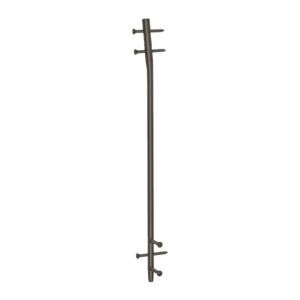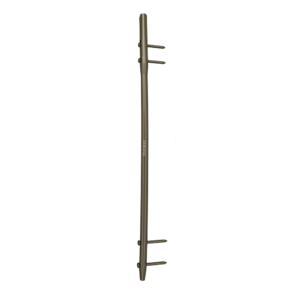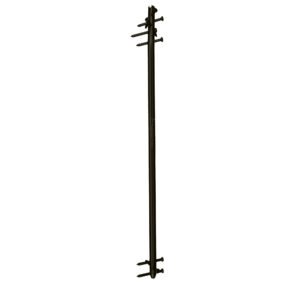Interlocking nailing systems have revolutionized the field of orthopedic surgery, offering innovative solutions for the treatment of fractures and bone deformities. Orthopedic surgeons widely employ these systems to provide stability, promote faster healing, and enhance the overall quality of life for patients.
In this blog, we will explore the fundamental concepts, benefits, and applications of interlocking nailing systems including Femur Nails, Tibia Nails, Humerus Nails.
Global Market of Intramedullary Nail
The global intramedullary nail market experienced fluctuations in procedure volumes. In 2020, the market witnessed a decline in procedures due to the COVID-19 pandemic. However, procedure numbers approached pre-pandemic levels in 2021, marking a noteworthy rebound.
Forecasts suggest that the market will witness continued growth, expected to be in the mid-single-digit range over the forecast period.
Despite its growth, the intramedullary nail market faces challenges linked to competition. Internal rivalry among competitors has put pressure on average selling prices, thereby tempering market expansion. Additionally, hospitals are actively streamlining their vendor relationships, intensifying competition within the industry further.
Understanding Interlocking Nailing Systems
Interlocking nailing systems are surgical techniques that involve the insertion of a metal nail or rod into the intramedullary canal of a long bone. The intramedullary canal is the hollow space inside the bone, which is an ideal location for stabilization. The nail is typically made of materials such as titanium or stainless steel, known for their biocompatibility and strength.
Benefits of Interlocking Nailing Systems
Stability:
One of the primary advantages of interlocking nailing systems is their ability to provide stable fixation. By securing the fractured bone internally, these systems prevent unnecessary movement and promote optimal alignment.
Minimally Invasive:
Interlocking nailing procedures are minimally invasive, requiring small incisions. This results in reduced damage to surrounding tissues, less postoperative pain, and faster recovery times.
Early Mobilization:
Patients treated with interlocking nails can often begin weight-bearing and movement sooner than those with traditional external fixation methods, speeding up the rehabilitation process.
Versatility:
These systems can be used for a wide range of long bone fractures, including those in the femur, tibia, humerus, and more.
Types of Interlocking Nail
I. Femoral Intramedullary Nailing:
Femoral intramedullary nailing is a surgical technique primarily used to treat fractures of the thigh bone, medically known as the femur. The femur is the longest and strongest bone in the human body, and fractures in this area can be complex and challenging to manage. Here’s a more in-depth look at this application:
- Complex Fracture Stabilization:
Femoral intramedullary nailing is particularly well-suited for complex femur fractures. These fractures may result from high-impact trauma, such as car accidents or falls from a height, and often involve multiple bone fragments. The technique provides stable fixation, preventing further displacement of fractured segments.
- Minimized Soft Tissue Damage:
One of the key advantages of this approach is its minimally invasive nature. Surgeons make a small incision at the hip or knee joint, allowing them to access the intramedullary canal without significant damage to the surrounding soft tissues. This reduces postoperative pain and accelerates the healing process.
- Early Mobilization:
Patients treated with femoral intramedullary nails can usually begin weight-bearing exercises and ambulation earlier than those with traditional fixation methods. This promotes faster recovery and reduces the risk of complications associated with prolonged immobilization.
II. Tibia Nails:
Tibia nails are specifically designed for fractures of the shinbone, or tibia. The tibia plays a crucial role in bearing the body’s weight, and fractures in this area can significantly affect a patient’s mobility and quality of life. Here’s a closer look at tibia nail applications:
III. Humerus Nails:

Humerus nails are used to treat fractures of the upper arm bone, known as the humerus. Fractures in this region can result from various causes, including falls, sports injuries, and accidents. Here’s a closer look at the applications of humerus nails:
Types of Femoral Intramedullary Nailing
Femoral intramedullary nails encompass a range of types, each uniquely suited to address specific femur fracture scenarios.
- Standard Intramedullary Nails, serve as the fundamental option. These straight or slightly curved rods provide stability for uncomplicated femur fractures that lack significant fragmentation. Their design facilitates straightforward alignment and fixation.
- Proximal Femoral Intramedullary Nails, are tailored for fractures near the hip joint, particularly in the femoral neck region. These nails have a shorter length and a specialized head, ensuring enhanced stability in this crucial area. Surgeons commonly deploy them for treating intracapsular hip fractures.
- Retrograde Intramedullary Nails, offer an alternative approach, inserted through the knee joint to travel up the femur in the opposite direction of standard nails.
They are preferred for fractures affecting the femur’s distal part, especially those near the knee. This technique becomes especially valuable when access to the proximal femur is challenging or fractures occur lower in the femur. - Expert Intramedullary Nails, are designed to tackle more complex femur fractures, including those with significant comminution or fractures in the diaphyseal region (the femur’s shaft).
These nails often feature advanced locking options, such as multiple interlocking screws or helical blades, enhancing stability. They provide adaptability to a wide spectrum of fracture patterns. - Supracondylar Femoral Intramedullary Nails, are employed for fractures occurring just above the knee joint in the supracondylar region. They incorporate specialized features for secure nailing above the knee while ensuring stability and alignment in the distal femur. These nails are particularly suitable for fractures extending into the femoral condyles.
Proximal Femoral Nail (PFN) by Zealmax Ortho
Orthopedic surgeons use the Proximal Femoral Nail (PFN) implant to treat proximal femoral fractures in the trochanteric region. Employing a closed intramedullary fixation technique, the PFN offers a range of specifications and sizes to address various clinical needs.
Specifications:
- Rotational Stability: The PFN features a load-bearing femoral neck screw and a hip pin, ensuring robust rotational stability during both intraoperative and postoperative phases. This stability is critical for the successful management of proximal femoral fractures.
- Safety Mechanism: The screw shoulder serves as an insertion safety stop, preventing unintended migration of the femoral neck screw into the femoral neck. This safety feature minimizes the risk of complications during the implantation process.
- Anatomical Placement: The PFN’s design allows for easy placement and precise positioning within the medullary canal at an anatomical angle of 6°. This anatomically accurate placement enhances the implant’s efficacy in fracture stabilization.
PFN Nail Sizes:
- Short Sizes: PFN Nails are available in short sizes, featuring a distal diameter ranging from 9 to 12 mm, with angle options of 130° or 135°. Lengths vary from 180 to 250 mm. These short-sized PFN Nails are offered in both stainless steel and titanium variants.
- Long Sizes: In addition to short sizes, PFN Nails are available in long sizes, featuring the same distal diameter and angle options (9-12 mm and 130° or 135°, respectively). The lengths of long-sized PFN Nails range from 340 to 440 mm.
These long-sized PFN Nails are also available in both stainless steel and titanium. Furthermore, you can obtain Proximal Femoral Nails for both the left and right femurs, allowing for precise customization to individual patient requirements.
Conclusion
Zealmax Ortho takes pride in manufacturing intramedullary nails of unparalleled quality. Our commitment to excellence ensures superior products that meet the highest standards in the orthopedic industry. With Zealmax Ortho, you can trust in the reliability, precision, and effectiveness of our intramedullary nails for optimal patient outcomes.
Reference
I data research




